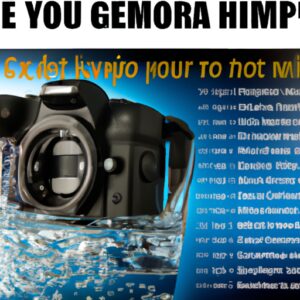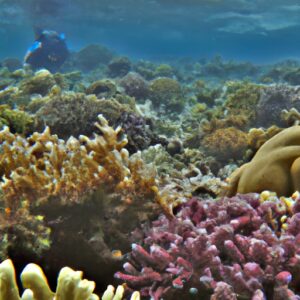
Underwater photography is a fascinating world, but it can be quite challenging. When you’re surrounded by water, everything looks different. The colors are muted, the light is scarce, and the details can be hard to capture. If you’re serious about underwater photography, you need to invest in some specialized gear. In this article, we’ll take a closer look at the most common underwater photography filters and their uses.
H2: The Magic of Filters
Before diving into the specific types of filters, let’s talk about how they work. Filters are essential for underwater photography because they help to balance the colors and adjust the exposure. When you’re taking photos underwater, the blue-green spectrum dominates the scene. Filters are designed to block some of the blue-green light and allow other colors to come through. They also help to add contrast and definition to your photos.
H2: Red Filters
One of the most popular filters for underwater photography is the red filter, and for a good reason. Red filters block out the blue and green wavelengths of light, allowing only the warm tones to come through. This filter is ideal for shallow water or when you’re using natural light. It helps to bring out the reds, oranges, and yellows, which can be hard to capture otherwise. The result is a warm and inviting photo with plenty of contrast and definition.
H2: Magenta Filters
If you’re diving in deeper waters or using a strobe, a magenta filter might be a better choice. Magenta filters block out the green and some of the blue light, but they allow some of the red and orange tones to come through. This filter is perfect for balancing out the colors in deep blue water, where green is the most dominant color. It helps to add contrast and definition to your photos, making the subject stand out.
H2: UV Filters
UV filters are not just for land photography; they have a place underwater too. UV filters help to remove the bluish-green color cast that appears in underwater photos. They also help to reduce the haze and improve the clarity of your photos. UV filters are ideal for shallow water and bright conditions, where the UV light is most intense.
H2: Polarizing Filters
A polarizing filter is another popular choice for underwater photography. Polarizing filters help to reduce glare and reflections on the water’s surface, making it easier to capture the underwater scene. They also help to increase the saturation of colors, making them more vibrant and inviting. Polarizing filters work best in bright, sunny conditions and shallow water.
H2: Conclusion
Underwater photography filters are essential for capturing stunning and creative shots. They help to balance the colors and adjust the exposure, making it easier to capture the underwater world’s beauty. As you become more experienced in underwater photography, you’ll learn which filters work best for your preferred shooting style. Invest in high-quality filters, and you’ll see a significant improvement in your photos. Remember, it’s not just about the gear; it’s also about the photographer’s skills and creativity. So, get out there and explore the underwater world, and capture it in all its glory!







